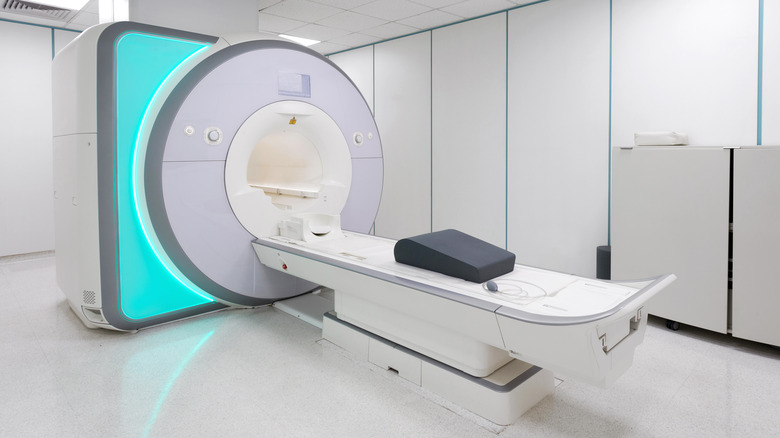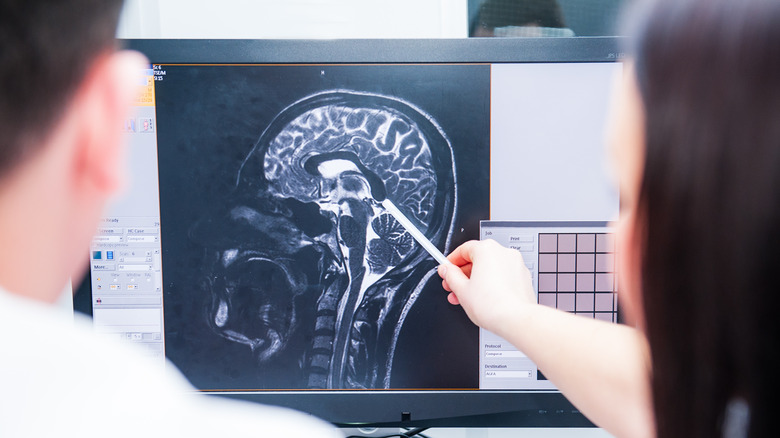What Happens To Your Body When You Get An MRI
Taking time out of your day to go lie still in a narrow tube and listen to loud and jarring noises, is probably not your idea of a good time. But if you need an MRI (Magnetic Resonance Imaging), that's just what you'll do. MRI's are powerful diagnostic imaging tools to help doctors get a really good look at what's going on inside your body. But what's actually happening to your body during an MRI?
The name — Magnetic Resonance Imaging — basically tells us what's going on. The MRI machine uses a strong magnetic field, radio waves, and a computer, to create a detailed image of the inside of your body (or body part, as it may be).
The magnetic field temporarily realigns the hydrogen atoms in your body. Computer-generated radio waves cause these atoms to send out faint signals as they realign, which are received and used to produce cross-sectional images. The images are then layered on top of each other to create a detailed picture (via Mayo Clinic).
MRIs are useful for providing detailed images of soft tissue
Doctors will often order an MRI when they suspect you have a condition that would not be picked up by a CT scan, X-ray, or ultrasound. Mina Makary, a radiologist at The Ohio State University Wexner Medical Center, says "It provides excellent anatomical detail of the soft tissues, which is helpful for the evaluation of specific conditions" (via SELF). MRI's can detect a wide range of brain, spinal cord, joint, and soft tissue abnormalities including aneurysms, strokes, structural problems, and tumors (Johns Hopkins Medicine).
Because of the strong magnets used, patients have to remove any metal pieces they may be wearing, like belts, earrings, and watches, and are screened for any conditions that might include implanted metal parts, like pacemakers or cochlear implants, and even some tattoos. Kerry L. Thomas, M.D., a radiologist at Moffitt Cancer Center, says "The most important part of having an MRI is that you do not have any metal on for your scan. The machine is a very strong magnet, and metals can cause problems."
If a patient has taken medication for sedation, they may need to pre-arrange a safe ride home. But for most people, MRIs are painless, and individuals can usually get back to their normal activities right after the exam.


